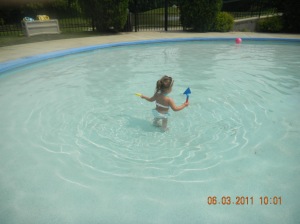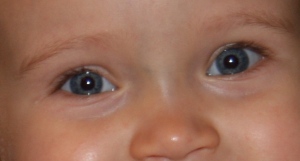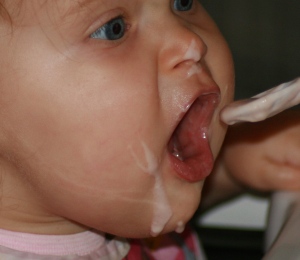
Is it safe for children to swim right after eating?
Here is what “Baby Center” says:
No. This one’s an old and familiar rule, but there’s very little truth behind it.
There’s no question that water is a huge hazard for kids, with drowning the second leading cause of accidental death among children ages 1 to 14. But these drownings simply have no connection with eating beforehand.
After eating, the body does direct blood to the stomach to help with digestion, so it’s conceivable – though unlikely – that swimming with a full stomach will lead to stomach cramps. Contrary to popular belief, a stomach cramp may be painful but it doesn’t make people sink and drown.
The American Red Cross says there’s no specific amount of time your child needs to wait before heading for the water after eating, but the organization does suggest waiting until he’s comfortable before engaging in any strenuous activity. If he’s sluggish or tired after chowing down, let him rest first. And, of course, children should be supervised whenever they’re in or around water.
Even though there’s no basis for the idea that swimming on a full stomach makes people sink like the proverbial stone, the myth is extraordinarily persistent. In BabyCenter’s 2009 Summer Survey, when we queried more than 1,300 moms about it, 58 percent said they think it’s unsafe to let children swim right after eating.
That said, here are five possible reasons not to allow kids to swim right after eating, suggested by BabyCenter parents:
1. The more likely danger of letting your young child swim right after eating is that he might throw up in the pool! Many parents – and pool lifeguards – tell us that this happens often enough, and when it does, the pool has to be closed and cleaned.
2. “It’s not safe to swim for half an hour after eating because Mom needs a break from watching the kids so closely. For at least three generations, my family has used it as an excuse to get away from the water for a bit, or so say my mom and her mom.” – SassySaru
3. “I have always told my kids they can’t go swimming after lunch in summer as it is the best way of getting the kids out of the sun at midday, thus protecting their skin from sunburn!” – Anonymous
4. “I normally let my little one swim right before her meal. Makes her hungrier and helps me feed her better. It’s a win-win for me.” – kanchan
5. “I’ve always felt sick to my stomach if I try to go back in the water right after eating. Really, if I do any major exercise after a full meal, I feel sick. I think the stomach isn’t getting the blood supply it wants to efficiently promote digestion, and you feel sick. That’s my story and I’m sticking to it with my kids.” – megs
via Is it true that it’s not safe for children to swim right after eating? | BabyCenter.







